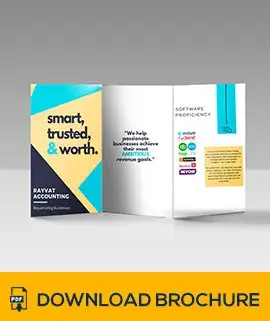How to Do Accounting in QuickBooks? Your Comprehensive Guide

Step 1: Getting Started with QuickBooks
Begin by creating a QuickBooks account and selecting the right version for your business needs. Choose between QuickBooks Online and QuickBooks Desktop, each offering unique features tailored to various business sizes and industries.
Step 2: Setting Up Your Company Profile
After logging in, it's crucial to set up your company profile accurately. Enter your business information, including your company name, address, industry, and fiscal year. This foundational step ensures that QuickBooks aligns with your specific business requirements.
Step 3: Chart of Accounts
Building a well-organized Chart of Accounts is fundamental to effective accounting. Create categories for your income, expenses, assets, and liabilities. Tailor these accounts to match your business structure, facilitating seamless financial tracking.
Step 4: Adding Bank and Credit Card Accounts
Integrate your bank and credit card accounts with QuickBooks to enable automatic transaction imports. This feature not only saves time but also reduces the risk of manual data entry errors. Regularly reconcile your accounts to maintain accurate financial records.
Step 5: Invoicing and Payments
Generate professional-looking invoices within QuickBooks to streamline the billing process. Customize your invoices with your logo, payment terms, and personalized messages. Track payments efficiently by recording them directly in the system.
Step 6: Expense Tracking
Simplify expense tracking by categorizing and recording your business expenses in QuickBooks. Attach receipts to transactions for thorough documentation, ensuring compliance with tax regulations.
Step 7: Generating Reports
Utilize QuickBooks' robust reporting tools to gain insights into your business's financial health. Generate reports such as profit and loss statements, balance sheets, and cash flow statements to make informed strategic decisions.
Step 8: Payroll Processing
If applicable, set up payroll within QuickBooks to automate payroll processing. This feature simplifies tax calculations, direct deposits, and compliance with employment regulations.
Step 9: Integration with Third-Party Apps
Explore QuickBooks' extensive app ecosystem to enhance its functionality further. Integrate with applications like CRM software, project management tools, and e-commerce platforms to create a seamless business workflow.
Step 10: Regular Backups and Updates
Ensure the security of your financial data by regularly backing up your QuickBooks files. Stay up-to-date with software updates to access the latest features and security patches.
By following these step-by-step instructions, you can harness the full potential of QuickBooks for efficient and accurate accounting. Remember, mastering QuickBooks takes time, so be patient and explore the various features to tailor the software to your unique business needs. Happy accounting!
Ready to streamline your finances and take control of your business? Contact us today, our team of QuickBooks experts lets us handle your bookkeeping and accounting needs with precision and expertise. Don't wait, take the first step towards financial clarity and success – reach out to us now!

